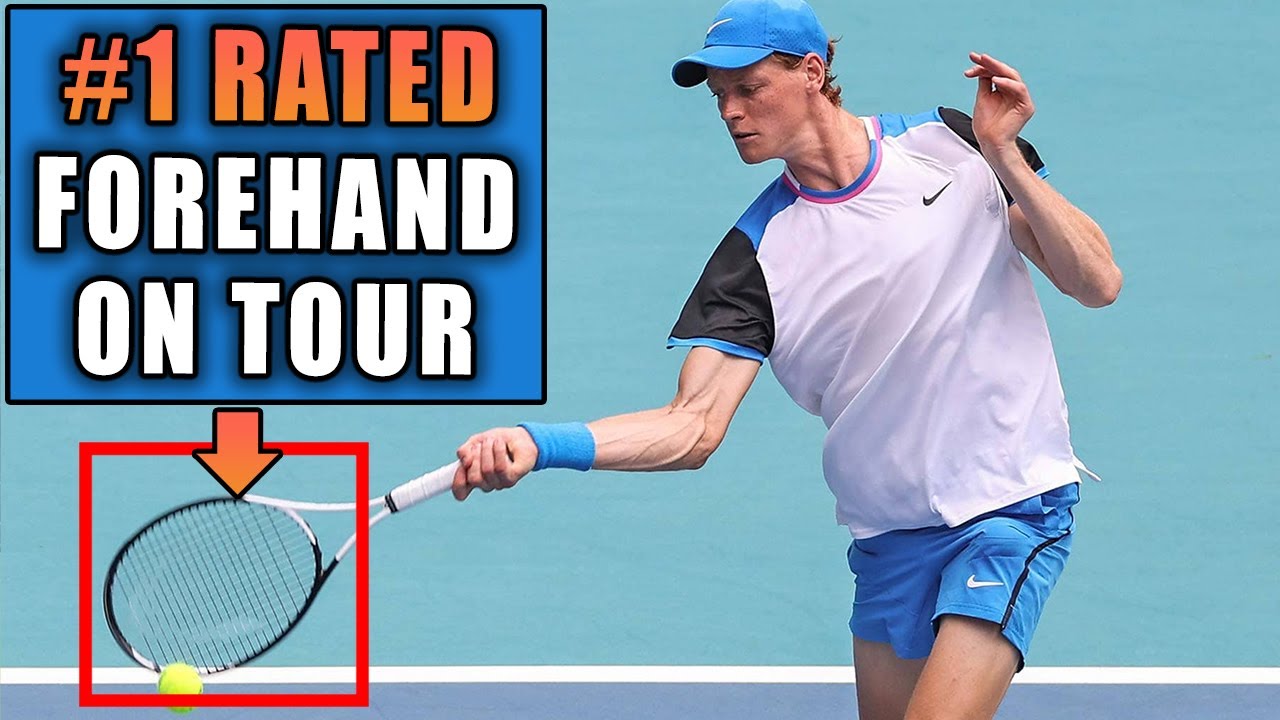PRO Forehand In 5 Simple Steps | Tennis Forehand Technique Lesson
Summary
TLDRIn this informative video, John Craig from Performance Plus Tennis breaks down the key components of a high-performance forehand. He emphasizes the importance of a proper ready position, the correct unit turn with the left arm, and the significance of the contact point and follow-through. Craig uses his video editor, Randy, to demonstrate these points, offering tips on maintaining balance, ensuring consistent spacing, and achieving powerful, controlled strokes. The video is designed to help viewers refine their forehand technique for improved tennis performance.
Takeaways
- 🏹 **Ready Position**: Start with feet wider than shoulder width, on the balls of your feet, legs flexed, and upper body upright.
- 🤾♂️ **Non-Dominant Hand Role**: Use the non-dominant hand to control the racket, allowing the dominant hand to stay soft and relaxed.
- 📏 **Wrist Positioning**: Flex the wrist in the ready position to establish a stable foundation for making contact with the ball.
- 🔄 **Unit Turn**: The left arm (for right-handed players) initiates the turn, coiling the shoulders and setting up power for the forehand.
- 🦅 **Left Arm Function**: The left arm helps balance and measure up to the ball during the unit turn, then comes away to assist the forehand motion.
- 🎯 **Contact Point**: Identify a consistent contact point slightly in front and out to the side, where the arm feels most comfortable and powerful.
- 🚀 **Weight Transfer**: Use the unit turn to transfer weight and core strength into the forehand, propelling the racket through the ball.
- 🌪 **Follow-Through Importance**: The intention to follow through accelerates the racket head, and a complete follow-through ensures control and repetition of the swing pattern.
- 🏆 **Stroke Production**: Holding the finish of the swing helps in developing a consistent and relaxed forehand stroke.
- 💡 **Body Control**: Maintain body stillness and head down during the swing for better control and connection with the ball.
- 📌 **Practice Tips**: Regular practice focusing on these key points will improve forehand performance and consistency.
Q & A
What is the first key point of a high-performance forehand according to John Craig?
-The first key point of a high-performance forehand is the ready position, which should enable efficient movement and reproduce the same feeling as you enter into your stroke.
How should your feet be positioned in the ready position for a forehand?
-In the ready position, your feet should be wider than your shoulders, and you should be on the balls of your feet with your legs flexed.
What is the importance of the non-dominant hand in the forehand ready position?
-The non-dominant hand controls the racket in the ready position, allowing the dominant hand to stay soft and not engage too much, which helps maintain a comfortable and effective grip.
Why is it important to flex the wrist in the ready position?
-Flexing the wrist in the ready position is important because it establishes the wrist position needed for making contact, providing stability and helping to avoid the common mistake of keeping the wrist straight.
What should a right-handed player do with their left arm from the ready position?
-A right-handed player should take the racket to the side with their left arm, which triggers the unit of movement and causes the shoulders to coil, setting up the power for the forehand stroke.
How does the follow-through in a forehand stroke contribute to the stroke's effectiveness?
-The follow-through is important because the intention to accelerate through the ball accelerates the racket head, and the follow-through itself is a natural extension of this acceleration, contributing to a controlled and powerful stroke.
What should be the focus during the contact point of a forehand?
-During the contact point of a forehand, it's crucial to know and target a specific spot where the arm is most comfortable and powerful. This spot should be slightly in front and away from the body, allowing for the best control and power.
How does the unit turn contribute to the forehand stroke?
-The unit turn is essential as it helps to coil the shoulders and set up the power for the forehand. It's similar to the winding up motion in baseball, preparing the body for a strong and coordinated swing.
What advice does John Craig give for maintaining control and balance during the forehand stroke?
-John Craig advises maintaining a balanced position with the left hand coming away from the body and not falling away or getting isolated. This helps in maintaining control and balance throughout the stroke.
How can holding the finish of a forehand stroke benefit a player?
-Holding the finish of a forehand stroke helps create awareness and purpose in the swing, encouraging a consistent and repeatable swing pattern, which is crucial for good stroke production.
What does John Craig suggest to avoid when hitting a modern topspin forehand?
-John Craig suggests avoiding stopping on the ball out of fear of hitting it out, as it makes controlling the timing, direction, and spin of the shot very difficult.
Outlines

هذا القسم متوفر فقط للمشتركين. يرجى الترقية للوصول إلى هذه الميزة.
قم بالترقية الآنMindmap

هذا القسم متوفر فقط للمشتركين. يرجى الترقية للوصول إلى هذه الميزة.
قم بالترقية الآنKeywords

هذا القسم متوفر فقط للمشتركين. يرجى الترقية للوصول إلى هذه الميزة.
قم بالترقية الآنHighlights

هذا القسم متوفر فقط للمشتركين. يرجى الترقية للوصول إلى هذه الميزة.
قم بالترقية الآنTranscripts

هذا القسم متوفر فقط للمشتركين. يرجى الترقية للوصول إلى هذه الميزة.
قم بالترقية الآنتصفح المزيد من مقاطع الفيديو ذات الصلة

Modern Forehand Tips And Technique Explained | Tennis Forehand Lesson

Jannik Sinner Forehand Analysis- Footwork, Technique, Swing Path And MORE!

Professional Volley Technique Explained | Volley Tennis Lesson

Top 5 Best Tennis Servers Of All Time (My Bias Opinion)

Tommy Paul Serve Analysis- Natural And Solid Fundamentals!

Table Tennis Forehand Lesson: Master the Basics
5.0 / 5 (0 votes)
